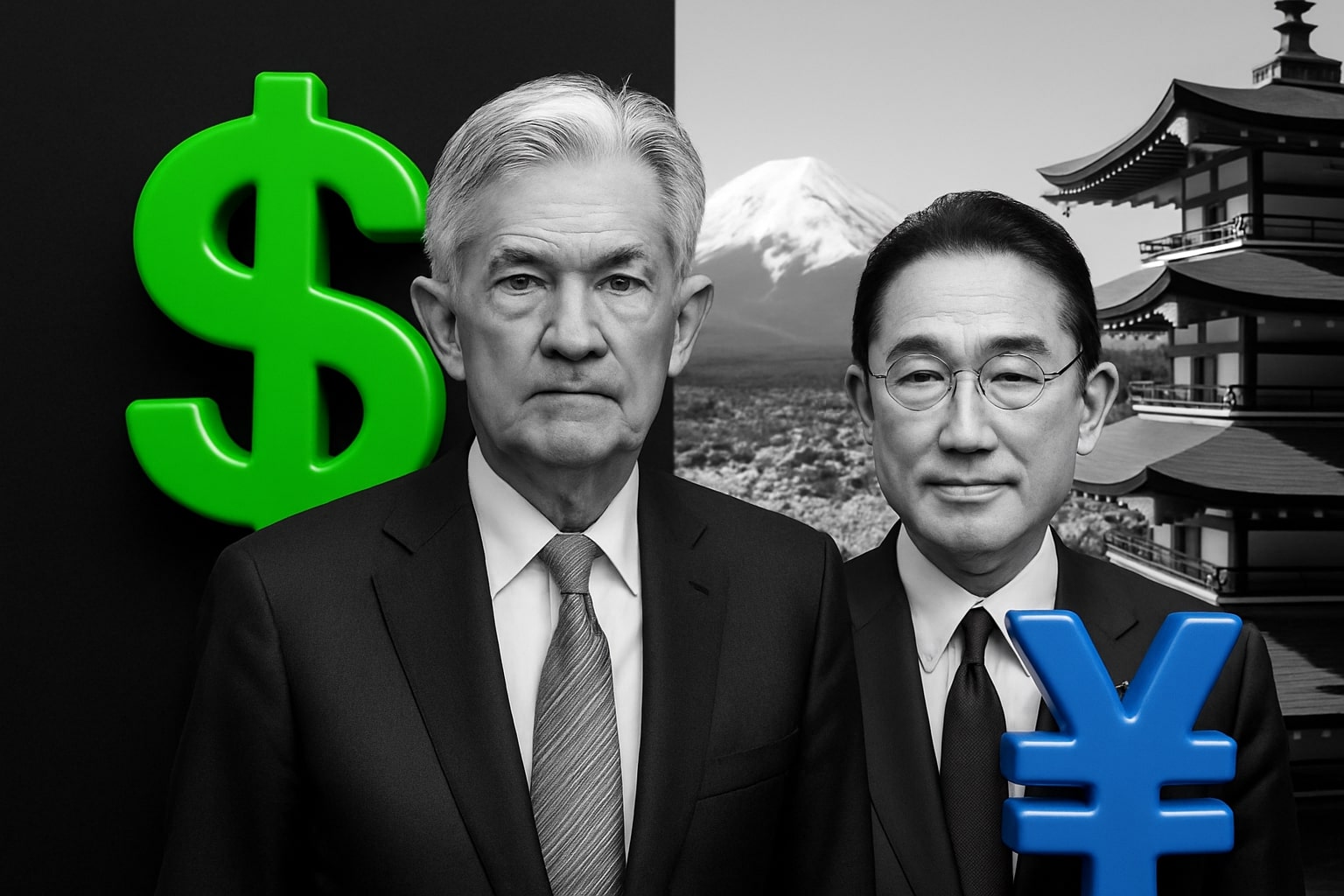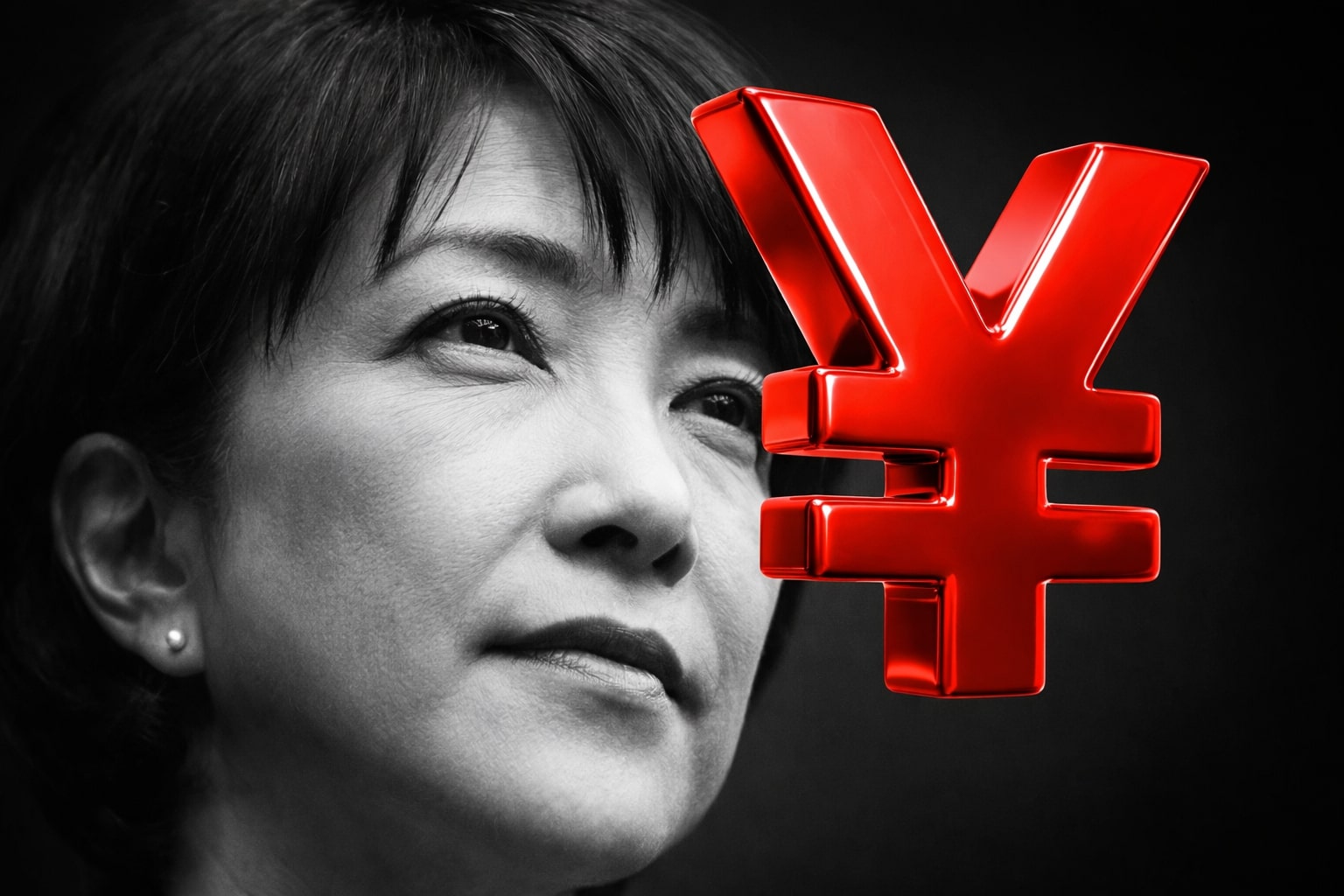
USD/JPY Price Forecast - Yen Surges Toward 154.60 as Fed Shifts to Neutral and Japan Raises Intervention Warnings
A jump from 153.62 to 154.60 reflects collapsing U.S. rate-cut expectations, a 4.00% vs 0.5% yield gap and BOJ caution | That's TradingNEWS
USD/JPY’s Repricing As Policy Divergence Widens And The Pair Trades Near 154.60
USD/JPY enters a critical phase as the exchange rate hovers around 154.60, recovering from an earlier drop toward 153.62, creating the strongest stretch of upward momentum in almost nine months. The price action reflects a fundamental reshaping of rate expectations between the Federal Reserve and the Bank of Japan, but the underlying forces driving this push are far more complex than a simple yield differential. Over the past five sessions, USD/JPY has gained more than 0.8%, a move powered by rising confidence in sustained U.S. rate stability combined with intense uncertainty stemming from the U.S. government shutdown, which left October CPI unreleased and pushed traders into a data-vacuum environment where policy commentary carries disproportionate weight.
Federal Reserve Signals A Longer Plateau At 4.00% And Its Impact On USD/JPY Microstructure
The Federal Reserve’s shift from dovish assumptions to a more patient holding stance has realigned the forward curve. A month ago, futures implied only a 5.49% chance of maintaining rates at 4.00% in December, with markets betting aggressively on a cut to 3.75%. That probability has now surged to 54.25%, a tenfold reversal that directly strengthens USD demand across global currency baskets. Markets are adjusting not only to the Fed’s refusal to promise cuts but to policymakers signaling the need for clarity on inflation and employment data that were never published due to the shutdown. Without CPI, the retail market and institutional desks rely on Fed speeches, and the messaging is unified: caution, patience, and a willingness to hold rates unchanged. This creates a critical asymmetry for USD/JPY, as Japan offers no equivalent upward adjustment in yields, amplifying demand for U.S. fixed-income assets.
Bank Of Japan’s Neutral Stance And Japan’s Fiscal Expansion Undermine Yen Stability
The Bank of Japan approaches its December 18–19 policy meeting with no urgency to alter its 0.5% benchmark rate despite internal discussions hinting at future tightening under stronger domestic conditions. The broader Japanese policy backdrop tilts in the opposite direction: aggressive fiscal spending initiatives paired with a BOJ hesitant to materially tighten create a structurally weaker yen. Japan’s Finance Minister has publicly expressed concern over the yen’s weakness and signaled readiness to monitor the currency with urgency. However, these statements alone carry little weight without matching policy action, and traders remember well that intervention levels sat near 150–152 in 2022, making current levels historically vulnerable. Still, intervention risk is not symmetrical; the government tolerates gradual Yen depreciation but reacts sharply to fast disorderly moves. With USD/JPY testing 154+, this becomes a tactical risk embedded into all long positions.
Bond Market Dynamics Reinforce The USD Advantage And Anchor USD/JPY Above Key Thresholds
The U.S.–Japan yield gap remains one of the widest globally, with the U.S. at 4.00% and Japan near 0.5%, creating a structural carry incentive favoring USD/JPY upside. The U.S. bond market is recovering as rate-cut bets collapse, drawing foreign capital into Treasuries for yield capture. In contrast, Japanese government bonds offer limited attractiveness, allowing outflows into higher-yielding USD assets. As long as this disparity persists, dollar demand continues to anchor USD/JPY near long-term highs, and the pair remains supported on dips, as seen in the rebound from 153.62 back to 154.60. The global risk environment further pushes investors into the USD as a defensive liquidity asset, particularly given the uncertainties created by the missing inflation data. Unlike previous cycles, this upward bias is not purely speculative; it is backed by policy realities and widening capital flows visible in major institutional rebalancing.
Technical Structure In USD/JPY Reflects A Mature Bull Trend With Momentum Imbalance
The long-term technical character of USD/JPY remains overwhelmingly bullish, with the ascending trendline in place since April continuing to guide price action. The pair shows no broad structural breakdowns, and each correction has been shallow and short-lived, reinforcing the underlying bid tone. The RSI trades above 50, affirming bullish momentum, yet the oscillator forming lower highs while price presses higher introduces a notable bearish divergence. This signals an overextended market condition that could invite corrective pressure even within the broader uptrend. The TRIX maintains position above the zero line, confirming persistent medium-term buying momentum across exponential moving averages. Price is compressing beneath the higher resistance clusters, and the divergence suggests reduced immediate fuel for impulsive breakouts unless new macro catalysts emerge. But the lack of strong selling waves keeps the bias tilted upward.
Critical Levels That Dictate Short-Term Strategy In USD/JPY
A decisive break above 154.931, the highest level since February, acts as the key trigger for renewed bullish control. This zone reflects the upper boundary that capped prior attempts to accelerate the trend. A close above this threshold would expand momentum and invite algorithmic trend-following systems to reengage. The next layer of relevance sits at 153.256, functioning as a nearby pullback reference after recent retracements. Deeper support lies at 150.580, overlapping with the 50-period simple moving average. A move back into this zone would imply a medium-term trend shift and introduce legitimate bearish risk. The momentum of USD/JPY toward 154.60 increases the significance of these thresholds as macro uncertainty grows. With thin data availability, technical structures take on added importance for traders calibrating levels of acceptable risk relative to potential intervention shocks.
Japan’s Weakening Yen And Fiscal Push Intensify Pressure On USD/JPY Stability
Japan’s fiscal policies aim to stimulate domestic growth, but the secondary effect is a softer yen, especially when paired with the BOJ’s resistance to tightening. This dynamic played a major role in USD/JPY’s recovery toward 154.60. The market sees no imminent conditions forcing the BOJ to lift rates, meaning the yen remains fundamentally disadvantaged. Meanwhile, the Finance Minister’s warnings indicate Tokyo’s heightened concern as current price levels dangerously approach prior intervention thresholds. Traders with exposure to USD/JPY understand the asymmetric nature of intervention risk: it does not require a policy shift, only a disorderly spike. The current structure resembles late 2022, where sharp surges preceded aggressive yen-buying actions. This makes intervention a tactical wildcard for any sustained move above 155.
Read More
-
IVE ETF Near $212: Is This S&P 500 Value Play Still Cheap for 2026?
20.12.2025 · TradingNEWS ArchiveStocks
-
XRP ETFs XRPI at $11.07 and XRPR at $15.76 Power $1.2B Inflows as XRP Fights for $2
20.12.2025 · TradingNEWS ArchiveCrypto
-
Natural Gas Price Forecast: NG=F Tests $3.60 Support as LNG Boom and $5 Henry Hub Calls Build Into 2026
20.12.2025 · TradingNEWS ArchiveCommodities
-
USD/JPY Price Forecast - Pairs Surges After BoJ’s 0.75% Hike as Pair Eyes 161.50 Resistance
20.12.2025 · TradingNEWS ArchiveForex
U.S. Dollar Behavior Against Global Currencies Provides Cross-Market Confirmation For USD/JPY
The U.S. Dollar Index shows uneven strength across different currency pairs, with USD strongest against GBP and moderately strong against EUR and CAD, confirming a broader environment that benefits USD/JPY. The yen remains one of the weakest major currencies due to both monetary and fiscal positioning, amplifying USD gains. Market sentiment reflects caution despite the government reopening, as instability surrounding the missing CPI data creates unusual trading conditions. USD flows remain supported by expectations of prolonged higher rates and structural demand for safety during incomplete macro visibility. The probability shift from 94% likelihood of a December cut to 49% further underscores this dollar reinforcement cycle, affecting USD/JPY directly.
Strategic Implications For Traders Operating In A Volatile USD/JPY Environment
With USD/JPY climbing sharply toward 154.60, markets navigate a landscape shaped by missing data, risk of Japanese intervention, and rapidly shifting rate expectations. The absence of October CPI eliminates a central piece of macro evidence, pushing traders to rely on second-tier indicators and Fed communications. This creates higher volatility windows, with binary outcomes depending on policy clarity. The divergence between U.S. hawkish persistence and Japan’s dovish inertia fosters a structurally higher USD/JPY, but the threat of abrupt yen-buying operations from Japanese authorities imposes a real ceiling risk. Long positioning remains favorable only with hedged structures, and options markets increasingly price two-way volatility, reflecting the uncertainty of moves between 150 and 160.
Final Verdict Based On All Data: Buy, Sell, Or Hold On USD/JPY
After evaluating Fed expectations, BOJ positioning, rate differentials of 4.00% vs 0.5%, intervention risks above 152–155, the rebound from 153.62 to 154.60, structural bullish technical trends, RSI divergence, TRIX support, the missing CPI distortion, Japan’s fiscal expansion, and global USD strength, the data aligns toward a very specific conclusion.
USD/JPY is a Buy with intervention-aware caution, meaning bullish bias remains dominant but must be managed with volatility hedges due to elevated risk of Japanese government action at these price levels.



















